Gaya is the second largest city of Bihar, India. Situated on the banks of the Phalgu , it is a place sanctified by the Hindu, the Buddhist and the Jain religions. It is surrounded by small rocky hills (Mangla-Gauri, Shringa-Sthan, Ram-Shila and Brahmayoni) by three sides and the river flowing on the fourth (eastern) side. The city has a mix of natural surroundings, age old buildings and narrow bylanes. Gaya derives its name from the mythological demon Gayasur.Lord Vishnu killed Gayasur, the holy demon by using the pressure of his foot on him. This incident transformed Gayasur into the series of rocky hills that make up the landscape of the Gaya city. Gaya was so holy that he had the power to absolve the sins of those who touched him or looked at him; after his death many people have flocked to Gaya to perform Shraddha sacrifices on his body to absolve the sins of their ancestors. Gods and goddesses had promised to live on Gayasur's body after he died, and the hilltop protuberances of Gaya are surmounted by temples to various gods and goddesses.Gaya is significant to Hindus from the point of view of salvation to the souls of ancestors (a ritual called pinda daan). According to Ramayana, Lord Rama came to Gaya along with Sita for pitripaksha (or to perform pindadanam). While Lord Rama had gone to have his bath before offering this pindadanam, his father King Dasharath's hands appeared and a voice spoke to Sita asking her to offer the pindam herself, as the King was very hungry. Moved by this, Sita prepared pindams out of sand, and offered them herself to the hands that appeared to receive them. After some time, Lord Rama came back and started performing the rites. When it was time to give the pindadanam, he was surprised and pained to see his father's not receiving it. Sita then explained what had occurred. She called for the river Falgu, a Brahman standing nearby, cow, and a banyan tree nearby as a witness to this miraculous occurrence. Except for the banyan tree that supported her, rest of them denied her story - Brahman had a greed for more money as offerings, river Falgu in a wish to receive more offerings from Lord Ram, and the cow in awe of the Lord. So, Sita cursed the three liars. Ramayana states that on account of this curse, Falgu River lost its water, and the river is simply a vast stretch of sand dunes. At the same time Sita blessed a banyan tree to be immortal. This tree is known as Akshyavat. Akshyavat is combination of two words Akshya (which never decay) and Vat (Banyan tree). Once a year banyan trees shed leaves, but this particular tree never sheds its leaves which keeps it green even in times of drought.
How to reach here:
By Air: Gaya International Airport is the only operating international airport in Bihar and Jharkhand.
By Rail: Gaya is well connected to the rest of India by railways.
Best time to visit: October to March.
Languages spoken: Hindi.
Must eat: Sattu, litti, Pittha, Pua, Marua-ka-roti, Bari-dal, sattu-ka-roti, baigan-bharta, sukhaota, Tilkut, Kesaria Peda, Lai, Sabudana-Badam Bhoonja and Anarsa.
Famous Restaurants: Be Happy Cafe, Lotus, Om, Royal Residency, Fujia Green.
Places you must visit:
Vishnupad Temple is sacred among Hindus and is dedicated to Lord Vishnu. The city has developed around the temple. According to believers and religious texts, the footprints inside the temple are those of Lord Vishnu. The temple is built in Shikhara style and was reconstructed in the year 1766, by Ahilya Bai Holkar of Indore. This temple is located along the Falgu River, marked by a footprint of Lord Vishnu known as Dharmasila, incised into a block of basalt.Once a Demon known as Gayasura did a heavy penance and sought a boon that whoever sees him should attain salvation (Moksham). Unable to withstand this, Lord Vishnu asked Gayasura to go beneath the earth and did so by placing his Right foot on Asura's head. After pushing Gayasura below the surface of earth, Lord Vishnu's foot print remained on the rock that we see even today. Inside the Vishnupad Temple, the 13 inch long footprint of Lord Vishnu is imprinted in solid rock and surrounded by a silver plated basin.Being an Asura, Gayasura pleaded for food. Lord Vishnu gave him the boon that everyday someone or the other will feed him. Whoever who does so, will show Vaikuntam or Swargam for the departed souls. The height of this temple is 30 meters and it is built of large gray granite blocks joined with iron clamps.The temple complex is quite big and houses many images of different Gods and Goddesses. There are many other shrines in and around the temple. Another important temple is of Lord Narsimha, the god which according to Hindu mythology was a man-lion incarnation of Lord Vishnu.



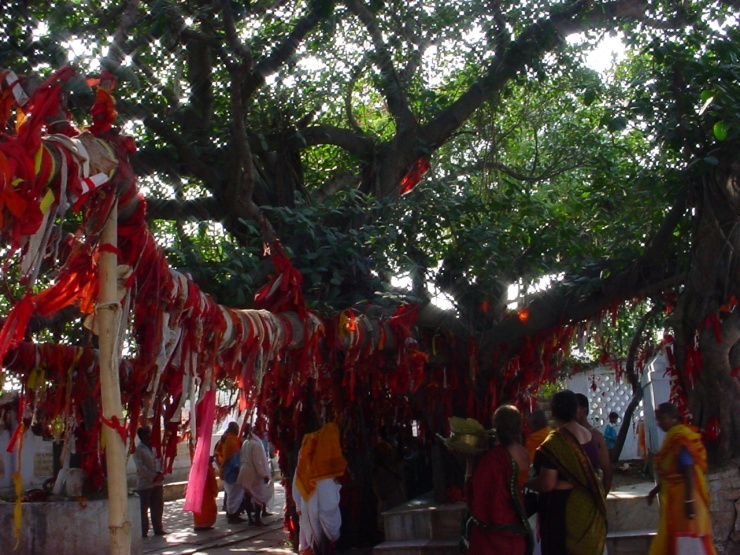

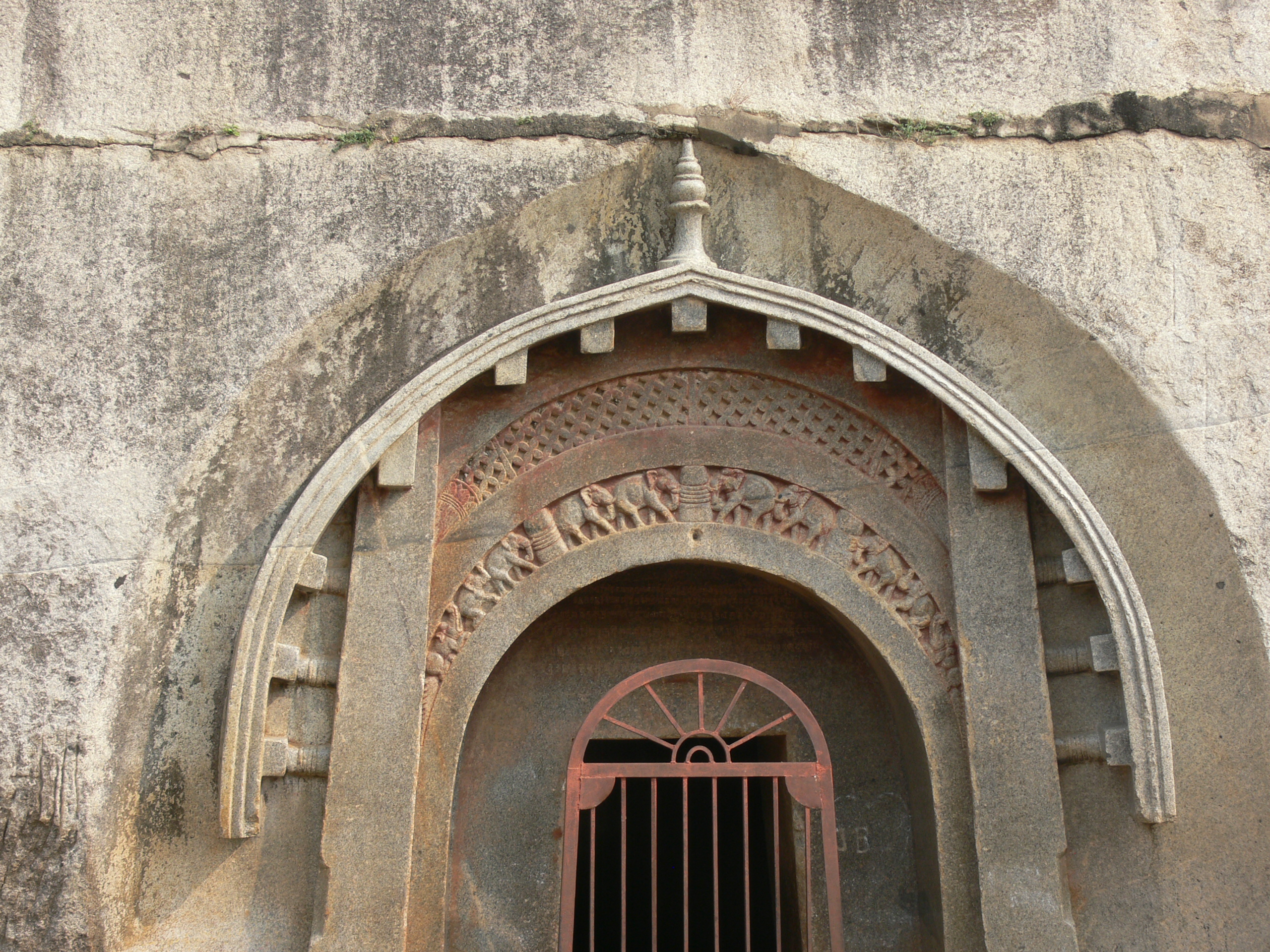



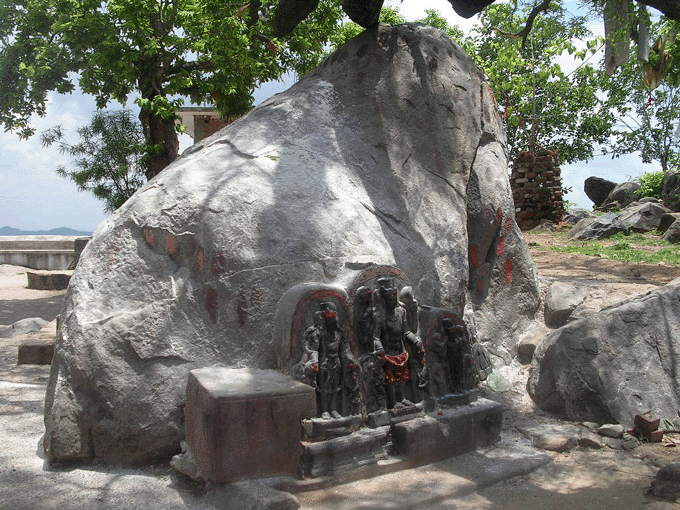
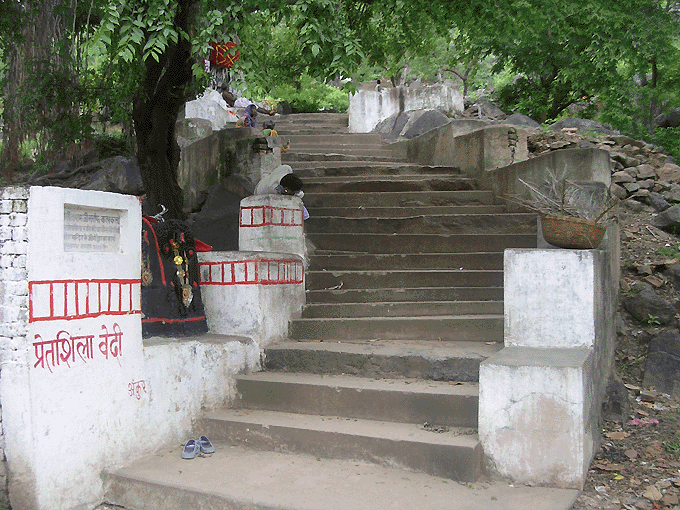

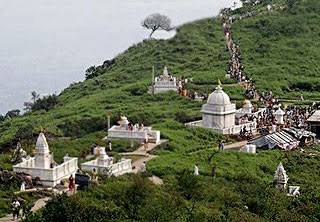






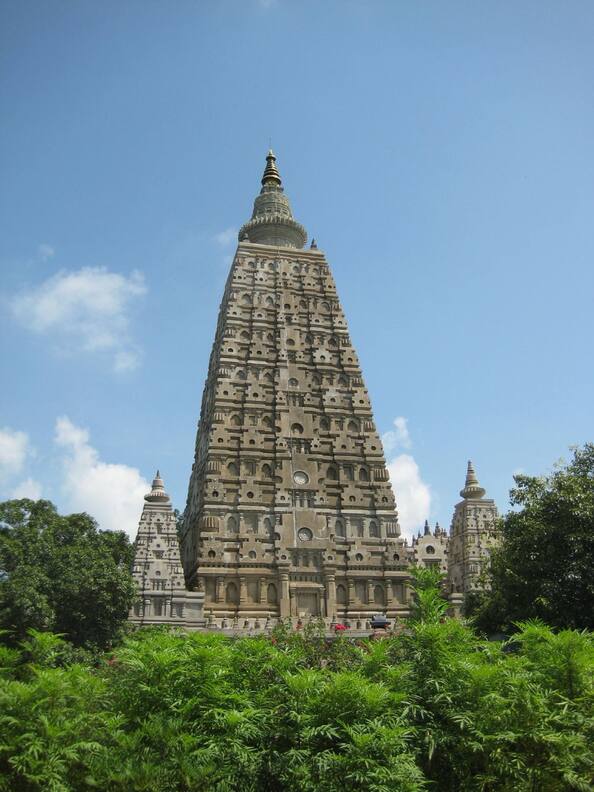


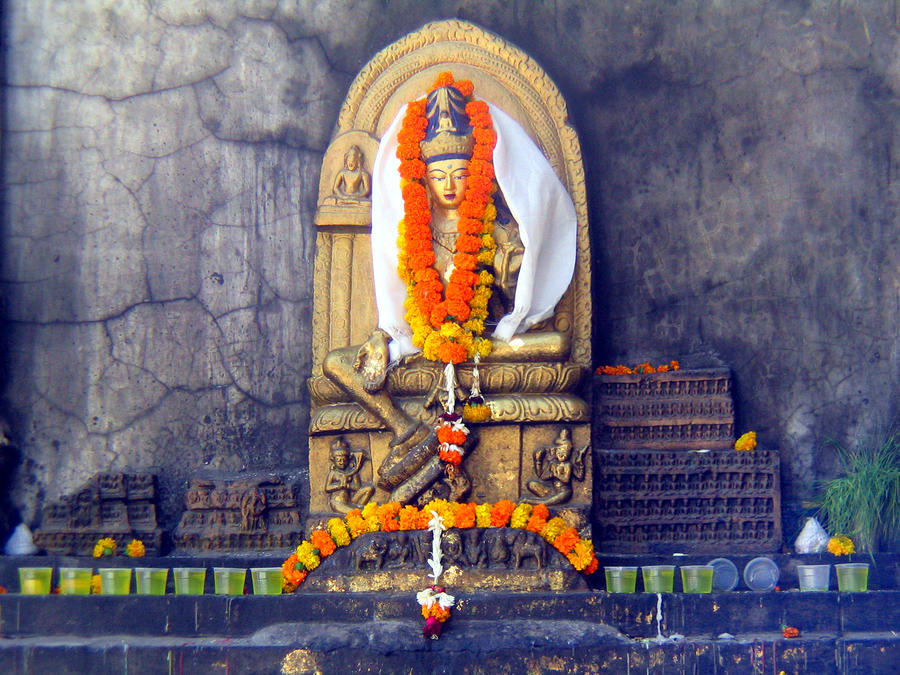

Pragbodhi is the place where Lord Buddha spent some time before attaining enlightenment. The place is evidence of Gautam Buddha’s efforts toward the eternal truth.

The Great Buddha statue standing tall at a height of 80 ft is one such attraction which pulls the visitors toward it with its overpowering presence and towering aura. Arguably the tallest Buddha statue in the country, it was inaugurated on 18 Nov 1989 by the XIVth Dalai Lama. This huge figurine depicts Lord Buddha meditating (dhyana mudra) while he is seated on a giant lotus in open air. An inspirational image near the Bodhi Shrine the Great Buddha Statue, is a mix of sandstone blocks and red granite.




.jpg)














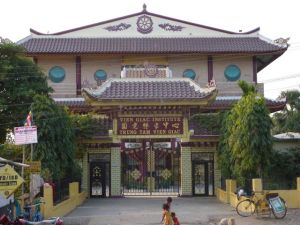
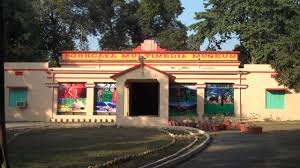
How to reach here:
By Air: Gaya International Airport is the only operating international airport in Bihar and Jharkhand.
By Rail: Gaya is well connected to the rest of India by railways.
Best time to visit: October to March.
Languages spoken: Hindi.
Must eat: Sattu, litti, Pittha, Pua, Marua-ka-roti, Bari-dal, sattu-ka-roti, baigan-bharta, sukhaota, Tilkut, Kesaria Peda, Lai, Sabudana-Badam Bhoonja and Anarsa.
Famous Restaurants: Be Happy Cafe, Lotus, Om, Royal Residency, Fujia Green.
Places you must visit:
Vishnupad Temple is sacred among Hindus and is dedicated to Lord Vishnu. The city has developed around the temple. According to believers and religious texts, the footprints inside the temple are those of Lord Vishnu. The temple is built in Shikhara style and was reconstructed in the year 1766, by Ahilya Bai Holkar of Indore. This temple is located along the Falgu River, marked by a footprint of Lord Vishnu known as Dharmasila, incised into a block of basalt.Once a Demon known as Gayasura did a heavy penance and sought a boon that whoever sees him should attain salvation (Moksham). Unable to withstand this, Lord Vishnu asked Gayasura to go beneath the earth and did so by placing his Right foot on Asura's head. After pushing Gayasura below the surface of earth, Lord Vishnu's foot print remained on the rock that we see even today. Inside the Vishnupad Temple, the 13 inch long footprint of Lord Vishnu is imprinted in solid rock and surrounded by a silver plated basin.Being an Asura, Gayasura pleaded for food. Lord Vishnu gave him the boon that everyday someone or the other will feed him. Whoever who does so, will show Vaikuntam or Swargam for the departed souls. The height of this temple is 30 meters and it is built of large gray granite blocks joined with iron clamps.The temple complex is quite big and houses many images of different Gods and Goddesses. There are many other shrines in and around the temple. Another important temple is of Lord Narsimha, the god which according to Hindu mythology was a man-lion incarnation of Lord Vishnu.



Akshayavat is located in the compound of Vishnupad temple. Akshyavat is a banyan tree, which is believed to be blessed by Sita (wife of Lord Ram) to become immortal and remain green throughout the year.

Surya Kund is a major tourist attraction. It is located on the west side of the famous Vishnupad temple. Devotees believe that a holy dip in the pond gets rid them of their sins. The place is thronged by tourists during festival seasons. The festival is organized twice in a year, first in the months of March-April and second in the months of September-October. Surya Kund becomes most visited place on Chhath when Sun God is worshiped and people from near by places come to take a dip in the Surya Kund.

Barabar caves are great heritage of Bihar. Numbering four in total these caves go back to the second century BC and were carved during Ashoka period. Historical evidence shows that great Buddhist king Ashok built these caves for Ajivikas. Lomas Rishi cave is the most magnificent which is carved as a thatched hut and has a big chamber inside it. The chamber hall and other walls of the cave have been brightly polished. Ashoka’s grandson built other two caves Sudama and Chaupar which are equally magnificent.



Pretshila is situated 100 kilometers away from the capital city of Patna and has great religious importance. Brahma Kund is situated just bellow Pretshila hill where devotees take holy dip in the water and then move forward to perform the ritual of Pind Dan. The ritual of Pind Dan according to Brahminical writings gives peace the departed soul of the ancestors.


Sujata Sthan or Durgeshwari Temple is situated in Gaya. According to legend, one day, while Buddha was doing severe penance, he became weak, tired and hungry. He rested under a tree where a condemned village woman named Sujata offered him food, To everybody’s surprise Buddha accepted her offerings. After having consumed the food, Buddha’s countenance assumed a divine glow and he realised the Supreme Truth that neither extreme self indulgence nor self-mortification is ever required. What is needed is to follow the Middle Path. Sujata Sthan or Durgeshwari Temple stands as a symbol commemorating this event.
Parasnath hill is a pilgrim destination located in Gaya. Jain religious scriptures reveal that out of 24 Jain Tirthankars, 22 attained salvation at this place and for this simple reason the place is considered the most sacred for Jain followers. Jain devotees flock in large number every year to Parasnath hill.


Pawapuri is located 90 kilometers away from Gaya. Jain followers believe that visiting the place one can get rid of his sins. Mahavir took his last breath at Pavapuri. A popular Jain tale says that when Mahavir died at Pawapuri, people took away not only the ashes but also scooped out earth which resulted into a tank. Pawapuri has a Jain temple called Jalamandir. Jalmandir is made of marble and is a major tourist attraction at Pawapuri.


Chhota Nagpur Plateau is a region of wild animals, rivers, lakes, and greenery is a major tourist attraction near Gaya. Located at the altitude of 300-900 meters, the plateau has verdant valleys to see and tribal culture of indigenous people in their original habitat is another attraction at the place. Tribes like Santhal, Ho, Munda, Oraon, Koi, Chero, Kharia, Paharia are really worth to observe and a silent study of their living and culture would really be a good idea.


Bodhgaya is one of the sacred places for the Buddhists as well as for the Hindus which is located just 13 Kms away from Gaya city,where the quest of Prince Siddharth was fulfilled after years of seeking the truth and the saga of Buddha began. Here under the Bodhi Tree, Gautama attained supreme knowledge to become Budhha, the `Enlightened One'. The Buddha attained enlightenment in Bodhgaya, under the Bodhi tree which still stands in the temple premises.The Prince had been wandering in search of supreme peace for long six years hither and thither. But it was at Bodhgaya only where his holy mission was achieved. The magnificent Mahabodhi temple in Bodhgaya is an architectural amalgamation of many centuries cultures and many heritages that came to pay their homage here. The temple definitely has architecture of the Gupta and later ages, inscriptions describing visits of pilgrims from Sri Lanka, Myanmar and China between 7th and 10th century AD. Bodhgaya has naturally developed into the most sacred spot for Buddhists from all over the world, especially the affluent south East Asia. Lying in sylvan solitude this sacred place is situated on the bank of river Niranjana (Modern Falgu).
Places you must visit:
The Bodhi tree (Asvatta tree ) is located in the Mahabodhi temple in Bodh Gaya. Under this very tree, Gautam Buddha meditated and finally attained enlightenment 2600 years ago. A sapling of the original tree was brought by Emperor Ashoka's daughter to Sri Lanka. A cutting of the tree was planted in Bodh Gaya, when the original tree died away. A red sand stone slab is found under the Bodhi tree, famously called as Vajrasana ( the diamond throne) where Buddha sat and attained Nirvana. The tree is 80 feet in height and is about 115 years old.

250 years after Gautam Buddha attained enlightenment, the Mauryan king Ashoka visited Bodh Gaya and got built the Mahabodhi Temple. However the original Mahabodhi temple had to be reconstructed and renovated. This was done during the Kushan period in the 1st century. With the passage of time the temple was abandoned and forgotten and got buried under the soil. It was later that Alexander Cunningham as a part of his archaeological work restored the temple. It houses a large, glided black stone image of the Buddha in the Bhumisparshamudra ( earth touching posture). The Mahabodhi Temple is very sacred for the Hindus because Lord Buddha is the ninth incarnation of Lord Vishnu.





Pragbodhi is the place where Lord Buddha spent some time before attaining enlightenment. The place is evidence of Gautam Buddha’s efforts toward the eternal truth.

The Great Buddha statue standing tall at a height of 80 ft is one such attraction which pulls the visitors toward it with its overpowering presence and towering aura. Arguably the tallest Buddha statue in the country, it was inaugurated on 18 Nov 1989 by the XIVth Dalai Lama. This huge figurine depicts Lord Buddha meditating (dhyana mudra) while he is seated on a giant lotus in open air. An inspirational image near the Bodhi Shrine the Great Buddha Statue, is a mix of sandstone blocks and red granite.


Rajayatna Tree situated to the south-east of the temple is the one such location where the Buddha spent is, the seventh week and incidentally the last week of meditation. Interestingly, this is the location where the famous hymn "Buddham Sharanam Gachchami" (I surrender to Buddha) was coined when two Burmese merchants took refuge under the tree. The tree is demarcated with a stone plaque and is considered the final stop at the complex.

Buddha is also believed to be an incarnation of Lord Vishnu and it is at the Lake Muchalinda that the SheshNaga or the Snake King Muchalinda protected his Lord from a severe thunder storm. The Buddha was meditating near the Lake during the sixth week when a strong storm broke out and the Lake waves started lashing the Buddha. Sensing the discomfort of the Lord the Snake King decided to protect him from the storm. The Lake is to the right of the main temple and a statue of meditating Buddha sitting on a snake coil and protected by the hood is at the centre of the Lake. The Lake is surrounded by lines of green trees.

.jpg)
The Animesh Lochana (open eyes) Chaitya shrine is one such location where the Buddha, spent seven days (the second week of enlightenment) looking at the Bodhi tree. It is believed that he did so without batting the eyelids as gratitude for sheltering him. Subsequently the Buddha spent another seven days walking between the Bodhi tree and the Animesh Lochan Chaitya. The route is called Ratnachankrama or the Jewel Walk.

The Bodhi Temple is surrounded by various shrines and articles that were purified by the pious presence of the Lord. One of the pathways which was utilised by Buddha during the third week of enlightenment, for the purpose of meditation is the Cankamana. Lying towards the northern fringe of the temple complex the spots that were blessed with the Lord’s feet have been carved into black stone lotuses. The entire walkway and surroundings are serene and calm. Moreover, the path is considered sacred and worshipped alongwith the images of the Buddha. The presence of monks and Bhikkus and their continuous chants create an amazing atmosphere in the vicinity of the spot.


The Chinese Buddhist monks have erected a beautiful Buddha temple in the vicinity of the Bodhi temple complex. As is the case with other foreign Buddha temples in the area, the temple exteriors reflect rich Chinese architecture and have been liberally decorated with typical Chinese designs. The marvelous Buddha statue instated in the sacred sanctum of the shrine has been brought all the way from China and is at least 200 years old. The Chinese temple was renovated in 1997, and also house three exquisite golden statues of the Buddha. It is also possible to preview various detailed and vivid travel logs written by numerous Chinese scholars who had traveled all the way to India in search of spirituality and knowledge.


The Indosan Nippon Japanese temple is situated at a distance of 15 km from the town of Bodh Gaya. The temple itself has been carved out from wood and resembles a typical Japanese shrine. The temple houses many exquisite Japanese paintings narrating many special events form the life of Gautam Buddha. The temple was constructed in 1972 is one of the most well maintained and attended temples. Apart from this temple the Japanese Government and people have funded many projects for preservation and spread of Buddhism and Buddha’s preaching.

The Royal Bhutan Monastery has been constructed by the King of Bhutan as a mark of respect to the Lord. The monastery is well maintained and is unique because of the singular fact that the interior walls of the monastery have peculiar clay carvings depicting various aspects of Buddhism.


The Thai Temple is adorned with sloping and curved roof which has been covered with golden tiles. The exterior is exquisite and is not to be missed. The temple houses a beautifully carved gigantic bronze statue of Lord Buddha. The atmosphere inside the sanctum is serene and silence falls on the ears upon entry into the monastery. A 25 meter high statue of Buddha has been recently installed in the garden near the Thai monastery.




The Government of Vietnam decided to dedicate a temple to the Lord and recently (in 2002) the Vietnamese temple was constructed near the Maha Bodhi temple complex. Being the most recent the temple has had all the advantages of science with it and has been exquisitely constructed with serene surroundings and beautiful vicinity. The extremely calm and serene statue of Avalokiteswara, or the very peaceful Buddha is housed within the sanctum of the temple. The statue appears to be smiling and absorbing the peaceful atmosphere around it.


Bodh Gaya Museum is run by the Archaeological Survey of India. It is located near the Mahabodhi temple. It displays antiquities excavated in and around Bodh Gaya. It has a large collection of Buddhist and Hindu relics, terracotta seals, scriptures and railings/pillars from the Sunga period (1 BC to 1 AD).
No comments:
Post a Comment